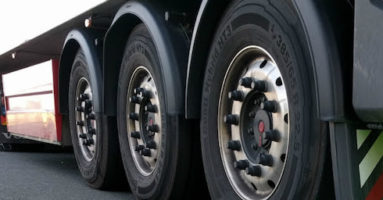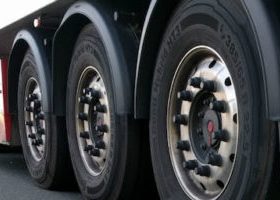The Driver & Vehicle Services Agency (DVSA) has issued a new guide on the use of tyres over 10 years old.
 The DVSA’s guidance doesn’t ban tyres of a specific age. It only says that operators should have an adequate tyre management system in place and consider the risks associated with the use of older tyres.
The DVSA’s guidance doesn’t ban tyres of a specific age. It only says that operators should have an adequate tyre management system in place and consider the risks associated with the use of older tyres.
The main factors to consider are speed, axle weight, journey distance, and the position of the tyre on the vehicle. These all influence how much stress the tyre is exposed to and the effect tyre failure may have on control of the vehicle.
Obviously, any tyre failure is a concern for road safety. It could cause a crash, there could be delays because of a broken down vehicle, and shredded tyre remnants could pose a danger to other road users.
All tyres of all ages should be regularly inspected by a competent person. This should be part of your tyre management and vehicle maintenance system.
Even if an older tyre appears safe, you’ll need to assess and manage any risks associated with its use. A short journey at a low speed when the vehicle is lightly loaded poses different risks to those involving long journeys, high-speed journeys, or use while the vehicle is laden.
Department for Transport guidance states that you should not use older tyres on a front axle. An older tyre could still be used on the rear axle as part of a twin wheel fitment, though.
Whether it’s safe to use older tyres on a three axle-trailer as part of a single-wheel fitment depends on how you’re using trailer and managing the tyres.
Having 3 axles and 6 wheels does reduce the risk of trailer instability and loss of control if a single tyre fails. But using older tyres at high speed and fully loaded potentially increases the risk of tyre failure.
In short, it again depends on how you’re using the tyres. That means your tyre management risk assessment should consider how you use the trailer and how often you inspect your tyres.
Trailers used at slower speed or lower weight will reduce the risk. So you can still use old tyres on a single wheel fitment as long as you have good tyre management systems in place.
Following a coach crash in 2013, concerns were raised that older tyres are more likely to fail catastrophically than younger tyres.
As a result, the Department for Transport (DfT) is currently researching the effect of age on tyre integrity. The results of this research will be publish later this year.
The DfT decided to introduce this guidance on the use of older tyres as a precaution while the research is still ongoing.
Once the results have been received and reviewed, the DVSA may reconsider or refine its approach to older tyres.
To sum up
There isn’t a ban on older tyres and you don’t necessarily need to stop using them. It all depends on how you’re using the tyres and how you manage any risks they might pose.
You should have a comprehensive tyre management plan in place that includes the identification of a tyre’s age.
You should not use older tyres on the steering axle of a motor vehicle. If you choose to do this, you must thoroughly assess the risks.
Ultimately, you are responsible for the safe operation of your vehicle.


.gif?rand=2383)









